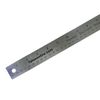2023 AMC 8 Problems/Problem 17
Contents
[hide]- 1 Problem
- 2 Solution 1
- 3 Solution 2
- 4 Solution 3 (Fast and Cheap)
- 5 Solution 4: Even cheaper than solution 3
- 6 Video Solution by Math-X (Simple Visualization)
- 7 Video Solution (CREATIVE THINKING!!!)
- 8 Animated Video Solution
- 9 Video Solution by OmegaLearn (Using 3D Visualization)
- 10 Video Solution by Magic Square
- 11 Video Solution by Interstigation
- 12 See Also
Problem
A regular octahedron has eight equilateral triangle faces with four faces meeting at each vertex. Jun will make the regular octahedron shown on the right by folding the piece of paper shown on the left. Which numbered face will end up to the right of ![]() ?
?
![[asy] // Diagram by TheMathGuyd import graph; // The Solid // To save processing time, do not use three (dimensions) // Project (roughly) to two size(15cm); pair Fr, Lf, Rt, Tp, Bt, Bk; Lf=(0,0); Rt=(12,1); Fr=(7,-1); Bk=(5,2); Tp=(6,6.7); Bt=(6,-5.2); draw(Lf--Fr--Rt); draw(Lf--Tp--Rt); draw(Lf--Bt--Rt); draw(Tp--Fr--Bt); draw(Lf--Bk--Rt,dashed); draw(Tp--Bk--Bt,dashed); label(rotate(-8.13010235)*slant(0.1)*"$Q$", (4.2,1.6)); label(rotate(21.8014095)*slant(-0.2)*"$?$", (8.5,2.05)); pair g = (-8,0); // Define Gap transform real a = 8; draw(g+(-a/2,1)--g+(a/2,1), Arrow()); // Make arrow // Time for the NET pair DA,DB,DC,CD,O; DA = (4*sqrt(3),0); DB = (2*sqrt(3),6); DC = (DA+DB)/3; CD = conj(DC); O=(0,0); transform trf=shift(3g+(0,3)); path NET = O--(-2*DA)--(-2DB)--(-DB)--(2DA-DB)--DB--O--DA--(DA-DB)--O--(-DB)--(-DA)--(-DA-DB)--(-DB); draw(trf*NET); label("$7$",trf*DC); label("$Q$",trf*DC+DA-DB); label("$5$",trf*DC-DB); label("$3$",trf*DC-DA-DB); label("$6$",trf*CD); label("$4$",trf*CD-DA); label("$2$",trf*CD-DA-DB); label("$1$",trf*CD-2DA); [/asy]](http://latex.artofproblemsolving.com/7/3/5/73573481f96dd080a6118ceb2a3c4588148704dc.png)
![]()
Solution 1
We color face ![]() red and face
red and face ![]() yellow. Note that from the octahedron, face
yellow. Note that from the octahedron, face ![]() and face
and face ![]() do not share anything in common. From the net, face
do not share anything in common. From the net, face ![]() shares at least one vertex with all other faces except face
shares at least one vertex with all other faces except face ![]() which is shown in green:
which is shown in green:
![[asy] /* Diagram by TheMathGuyd Edited by MRENTHUSIASM */ import graph; // The Solid // To save processing time, do not use three (dimensions) // Project (roughly) to two size(15cm); pair Fr, Lf, Rt, Tp, Bt, Bk; Lf=(0,0); Rt=(12,1); Fr=(7,-1); Bk=(5,2); Tp=(6,6.7); Bt=(6,-5.2); fill(Tp--Bk--Lf--cycle,red); fill(Bt--Bk--Lf--cycle,yellow); fill(Fr--Rt--Tp--cycle,green); draw(Lf--Fr--Rt); draw(Lf--Tp--Rt); draw(Lf--Bt--Rt); draw(Tp--Fr--Bt); draw(Lf--Bk--Rt,dashed); draw(Tp--Bk--Bt,dashed); label(rotate(-8.13010235)*slant(0.1)*"$Q$", (4.2,1.6)); label(rotate(21.8014095)*slant(-0.2)*"$?$", (8.5,2.05)); pair g = (-8,0); // Define Gap transform real a = 8; draw(g+(-a/2,1)--g+(a/2,1), Arrow()); // Make arrow // Time for the NET pair DA,DB,DC,CD,O; DA = (4*sqrt(3),0); DB = (2*sqrt(3),6); DC = (DA+DB)/3; CD = conj(DC); O=(0,0); transform trf=shift(3g+(0,3)); path NET = O--(-2*DA)--(-2DB)--(-DB)--(2DA-DB)--DB--O--DA--(DA-DB)--O--(-DB)--(-DA)--(-DA-DB)--(-DB); fill(trf*((DA-DB)--O--DA--cycle),red); fill(trf*((DA-DB)--O--(-DB)--cycle),yellow); fill(trf*((-2*DA)--(-DA-DB)--(-DA)--cycle),green); draw(trf*NET); label("$7$",trf*DC); label("$Q$",trf*DC+DA-DB); label("$5$",trf*DC-DB); label("$3$",trf*DC-DA-DB); label("$6$",trf*CD); label("$4$",trf*CD-DA); label("$2$",trf*CD-DA-DB); label("$1$",trf*CD-2DA); [/asy]](http://latex.artofproblemsolving.com/e/3/0/e302fe6b54462151675713d06e7e1271f1273bc5.png) Therefore, the answer is
Therefore, the answer is ![]()
~UnknownMonkey, apex304, MRENTHUSIASM
Solution 2
We label the octohedron going triangle by triangle until we reach the ![]() triangle. The triangle to the left of the
triangle. The triangle to the left of the ![]() should be labeled with a
should be labeled with a ![]() . Underneath triangle
. Underneath triangle ![]() is triangle
is triangle ![]() . The triangle to the right of triangle
. The triangle to the right of triangle ![]() is triangle
is triangle ![]() and further to the right is triangle
and further to the right is triangle ![]() . Finally, the side of triangle
. Finally, the side of triangle ![]() under triangle
under triangle ![]() is
is ![]() , so the triangle to the right of
, so the triangle to the right of ![]() is
is ![]() .
.
~hdanger
Solution 3 (Fast and Cheap)
Notice that the triangles labeled ![]() and
and ![]() make the bottom half of the octahedron, as shown below:
make the bottom half of the octahedron, as shown below:
![[asy] /* Diagram by TheMathGuyd Edited by MRENTHUSIASM */ import graph; // The Solid // To save processing time, do not use three (dimensions) // Project (roughly) to two size(15cm); pair Fr, Lf, Rt, Tp, Bt, Bk; Lf=(0,0); Rt=(12,1); Fr=(7,-1); Bk=(5,2); Tp=(6,6.7); Bt=(6,-5.2); dot(Bt,linewidth(5)); draw(Lf--Fr--Rt); draw(Lf--Tp--Rt); draw(Lf--Bt--Rt); draw(Tp--Fr--Bt); draw(Lf--Bk--Rt,dashed); draw(Tp--Bk--Bt,dashed); label(rotate(-8.13010235)*slant(0.1)*"$Q$", (4.2,1.6)); label(rotate(21.8014095)*slant(-0.2)*"$?$", (8.5,2.05)); pair g = (-8,0); // Define Gap transform real a = 8; draw(g+(-a/2,1)--g+(a/2,1), Arrow()); // Make arrow // Time for the NET pair DA,DB,DC,CD,O; DA = (4*sqrt(3),0); DB = (2*sqrt(3),6); DC = (DA+DB)/3; CD = conj(DC); O=(0,0); transform trf=shift(3g+(0,3)); path NET = O--(-2*DA)--(-2DB)--(-DB)--(2DA-DB)--DB--O--DA--(DA-DB)--O--(-DB)--(-DA)--(-DA-DB)--(-DB); dot(trf*(-DB),linewidth(5)); draw(trf*NET); label("$7$",trf*DC); label("$Q$",trf*DC+DA-DB); label("$5$",trf*DC-DB); label("$3$",trf*DC-DA-DB); label("$6$",trf*CD); label("$4$",trf*CD-DA); label("$2$",trf*CD-DA-DB); label("$1$",trf*CD-2DA); [/asy]](http://latex.artofproblemsolving.com/9/3/8/938142dcb5a14e3266ea9764b8bbf41669624d13.png) Therefore,
Therefore, ![]() and
and ![]() are clearly not the correct answer. Thus, the only choice left is
are clearly not the correct answer. Thus, the only choice left is ![]() .
.
~andy_lee
Solution 4: Even cheaper than solution 3
just cut it lol
use sharp ruler or just rip it
~Ching
Video Solution by Math-X (Simple Visualization)
https://youtu.be/Ku_c1YHnLt0?si=XilaQFDcnGR8ak7W&t=3364
~Math-X
Video Solution (CREATIVE THINKING!!!)
~Education, the Study of Everything
Animated Video Solution
~Star League (https://starleague.us)
Video Solution by OmegaLearn (Using 3D Visualization)
https://www.youtube.com/watch?v=nVSF2ujZkPE&ab_channel=SohilRathi
Video Solution by Magic Square
https://youtu.be/-N46BeEKaCQ?t=3789
Video Solution by Interstigation
https://youtu.be/DBqko2xATxs&t=2195
See Also
| 2023 AMC 8 (Problems • Answer Key • Resources) | ||
| Preceded by Problem 16 |
Followed by Problem 18 | |
| 1 • 2 • 3 • 4 • 5 • 6 • 7 • 8 • 9 • 10 • 11 • 12 • 13 • 14 • 15 • 16 • 17 • 18 • 19 • 20 • 21 • 22 • 23 • 24 • 25 | ||
| All AJHSME/AMC 8 Problems and Solutions | ||
The problems on this page are copyrighted by the Mathematical Association of America's American Mathematics Competitions. ![]()










